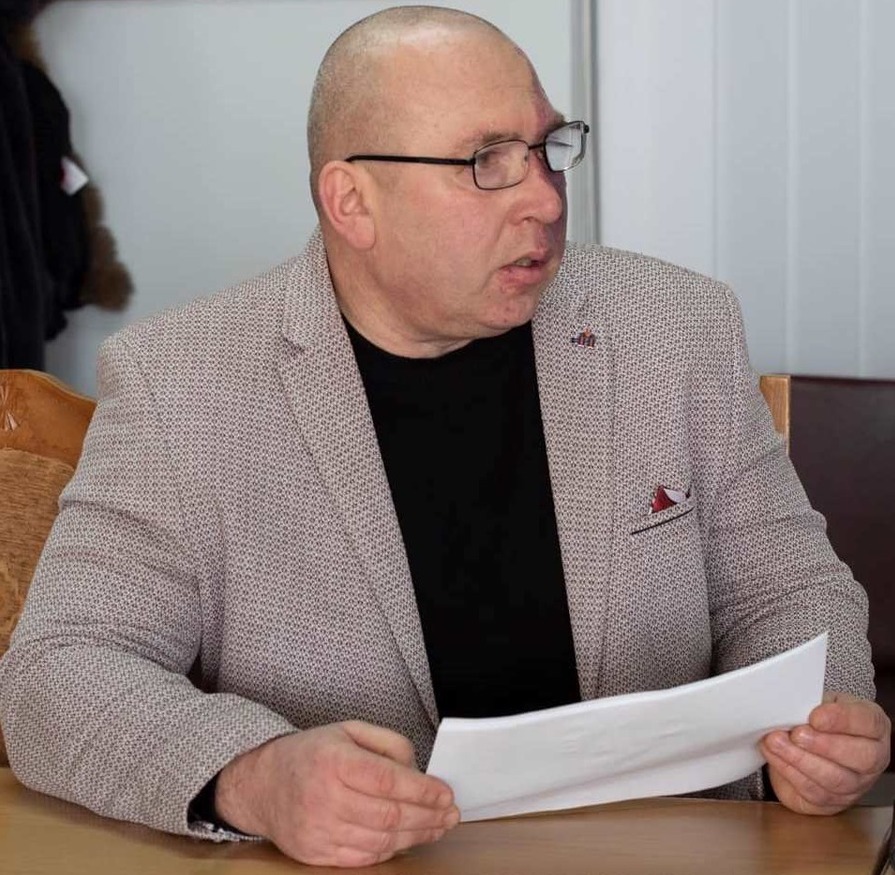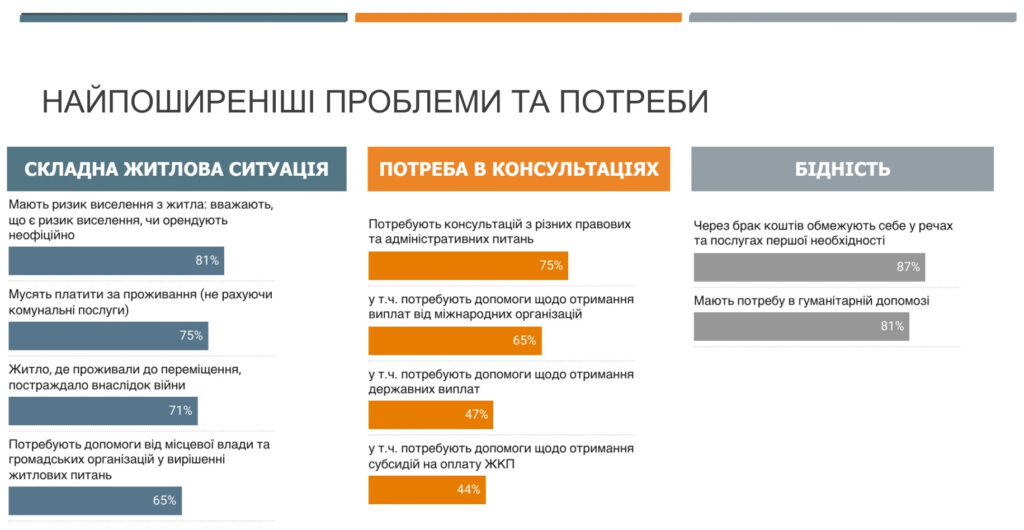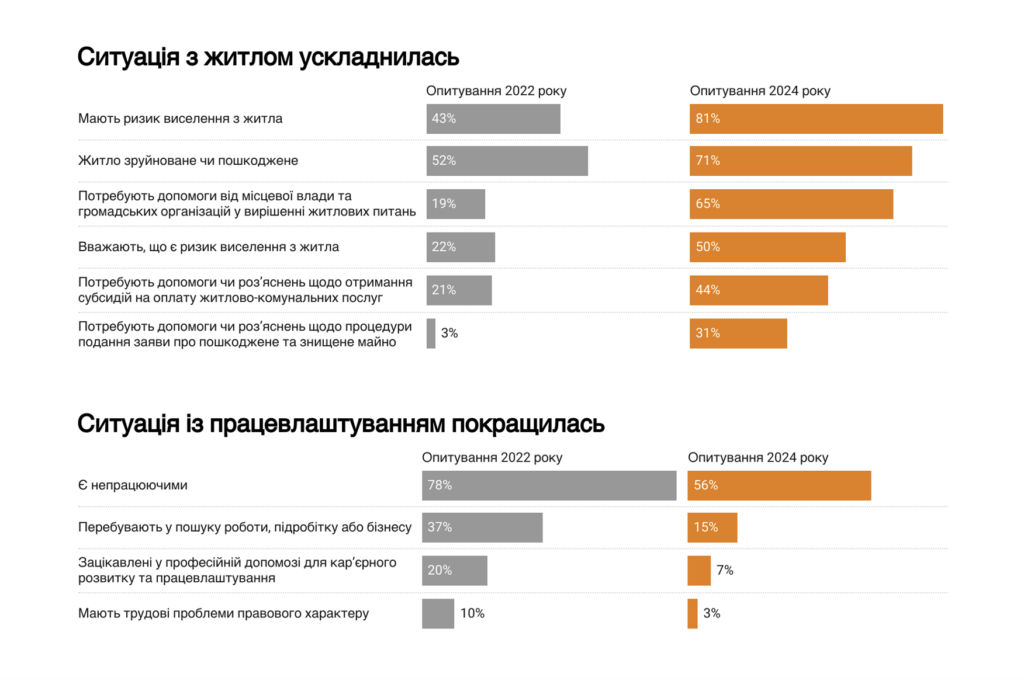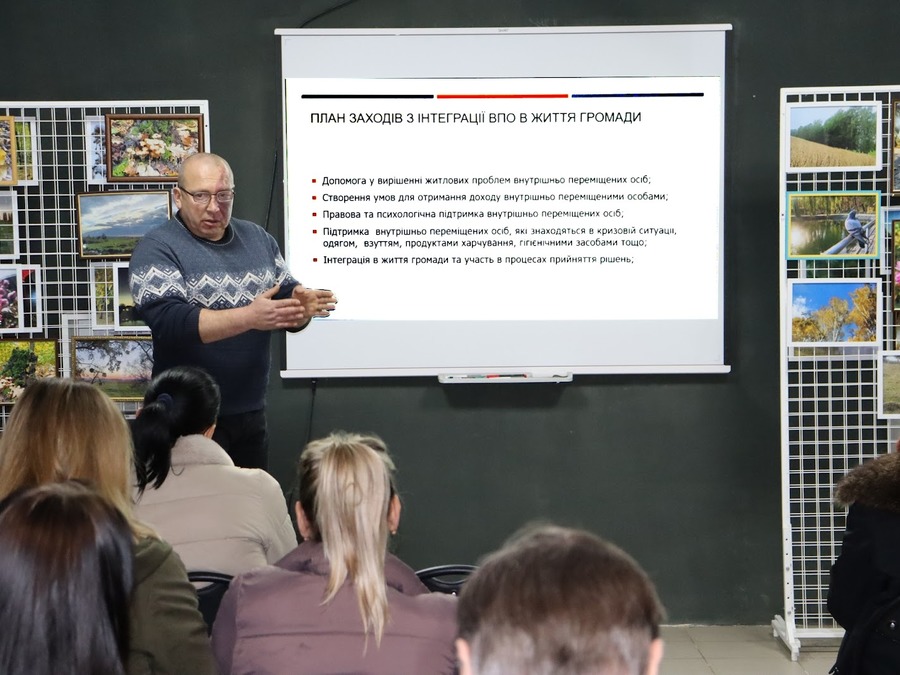Internally Displaced People in the Khmilnyk Community Receive Assistance to Adapt to Their New Lives, Taking Their Major Challenges into Account
Publication date: March 10, 2025
The Integration Plan for Internally Displaced People (IDPs) in the Khmilnyk Community of Vinnytsia Region for 2025 was approved in February of this year. The development of the plan, as well as a crucial survey that preceded it, involved the participation of the IDPs themselves. Vitalii DOROKH, the head of NGO Pravo, shared insights with us about the main challenges preventing people from adapting to their new environment, how these challenges will be addressed in the Khmilnyk Community, and the latest successful case of cooperation between NGO Pravo and the local government.

The Integration Plan for IDPs in the Khmilnyk Community for 2025 (hereinafter referred to as the Plan) *, approved by the city authorities, states that it is “aimed at creating favorable conditions for the adaptation of displaced people in the Khmilnyk City Territorial Community and addressing key challenges they face.”
To identify the most common problems and needs of displaced people, develop and approve the Integration Plan based on these findings, and also draft proposals for the Community Development Strategy until 2031, NGO Pravo conducted a survey at the end of 2024**. The survey involved people who moved to the Khmilnyk Community after the full-scale invasion. A total of 150 adult displaced people were surveyed, including 104 living in Khmilnyk and 46 residing in 20 different villages within the community.
Key Findings of the Survey
The survey revealed that the most common problem among displaced people in the Khmilnyk Community is lack of financial resources, which forces people to limit themselves in purchasing essential items and services, including food, seasonal clothing and footwear, and medicines. According to the researchers, such necessary saving could have medical, social, and psychological consequences for displaced people.
The second most common category of challenges is related to housing. First, most displaced people’s homes were damaged as a result of hostilities, and their settlements are either located in areas under occupation or in zones of active hostilities, making it difficult for them to return home. Second, many IDPs are in vulnerable housing situations: they rent accommodations without formal agreements and/or fear they may be evicted. Third, the need to rent housing and pay for utilities places a significant financial burden on displaced families. Some of them also report a lack of certain amenities and high-quality internet access in their homes, which limits their ability to study and earn income.
Among the most requested services by displaced people are humanitarian assistance and explanations on various bureaucratic and legal issues. The most relevant requests include consultations on obtaining financial assistance for IDPs from the state and international organizations, as well as subsidies for paying for housing and utilities.

It is worth noting that a similar survey was conducted in the Khmilnyk Community for the second time.
- We used the same questionnaire as in the first survey, which was conducted in 2022. This was done intentionally to observe what had changed — for better or worse, explains Vitalii Dorokh. When we compared the results, we noticed certain trends: the housing situation has worsened, while the employment situation has improved. Of course, changes have occurred in many areas, but those you see below are the most significant.

When asked about the most noticeable trends in the integration of IDPs compared to the beginning of the full-scale invasion, the head of Pravo, an organization that closely collaborates with displaced people, responded:
- At the beginning of the war, people were in a state of stress. Now they are more focused on self-realization in their new environment: some are planning to buy housing, others have found jobs, and some are considering starting or reviving their own businesses…
“The Integration Plan was developed with the involvement of the displaced people themselves”
The “Integration Plan for Internally Displaced People in the Khmilnyk City Territorial Community of Vinnytsia Region for 2025” envisions that throughout the year, the community will implement 33 initiatives aimed at improving the socio-economic situation of displaced people, providing them with housing support and legal protection, offering medical, educational, and psychological services, creating employment opportunities, and encouraging the active participation of IDPs in community life.
In addition to the data from the aforementioned survey, the document is based on the results of a facilitation session and consultations conducted with all relevant stakeholders. NGO Pravo also took responsibility for this process.
- First, we held a facilitation session attended by representatives of government agencies involved in addressing the issues faced by displaced people, representatives of civil society organizations, the IDP council, our experts, and the displaced people themselves who live in the community, says Vitalii Dorokh. At the beginning of the event, we presented the survey results, and then we worked both individually and in groups to develop proposals for the Integration Plan. We gathered all the suggestions, analyzed them, and drafted the plan. Then, we held a roundtable discussion involving the same participants from the facilitation session, where we presented the draft document. Everyone had the opportunity to express their views and submit additional proposals and comments on the draft plan, which we uploaded to Google Docs.

Proposals for the Integration Plan were developed by displaced people during the facilitation sessions. Photo: NGO Pravo.
After collecting and processing all the proposals, the team at Pravo prepared the final version of the document, which was presented during a meeting of the Coordination Center for Civilian Support under the executive committee of the Khmilnyk City Council.

Presentation of the Integration Plan at Murashnyk Hub. Photo: NGO Pravo.

- After that, having received all the approvals from the structural units of the city council involved in implementing the Integration Plan, we submitted a petition to the mayor to present the Plan for approval at a meeting of the executive committee of the city council, clarifies the head of the organization.
According to Vitalii Dorokh, all the activities planned in the Integration Plan are important and affect a large number of people. Moreover, given that displaced people themselves were involved in developing the plan, their responses regarding the most pressing issues today have, in fact, become the guiding point in this process.
* The Integration Plan for Internally Displaced People in the Khmilnyk Community for 2025 was developed within the framework of the project Integration Through Action: Strengthening IDP Participation in Decision-Making, implemented by NGO Pravo in partnership with the Khmilnyk City Council, with the support of the International Renaissance Foundation.
You can view the Integration Plan for Internally Displaced People in the Khmilnyk Community for 2025 here.
** The full version of the report Challenges and Needs of Internally Displaced People in the Khmilnyk Community is available here.
You can receive individual consultations via the online chat of the Legal Development Network. The chat is available daily from 10:00 AM to 4:00 PM. Assistance is provided by lawyers from human rights organizations that are part of the Legal Development Network.
Stay updated on the latest news and events — subscribe to our Telegram channel: https://t.me/LegalDevelopmentNetwork
P. S. In June 2024, the Legal Development Network (LDN) launched a crowdfunding campaign, Recovery of The South of Ukraine , as part of the crisis response program #StandWithUkraine.
You can Recovery of The South of Ukraine |
If you have notices an error on the web-site, please, highlight the text and press ctrl-enter.
Have you found your solution? Help others!
Print a poster
Print and place the Network's poster on a notice board in your entrance hall
Become a volunteer
Become a volunteer and assist others in finding problem solutions
Do you need a consultation ?
Online chat
Ask question and one of the LDN's lawyers
will answer it.
Chat's schedule: from 10 to 16
every day
Chatbot
Ask questions via LawLink Bot in any convenient way. LawLink Bot is a smart and digital legal assistant created by the Legal Development Network.

Our initiatives
The Legal Development Network implements comprehensive projects aimed at strengthening human rights, developing capable communities, and building sustainable tools for access to legal aid. We work at the intersection of advocacy, legal education, and local coordination of humanitarian response.
